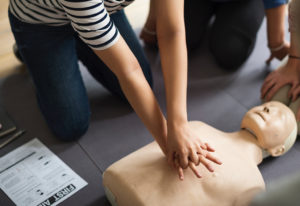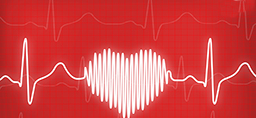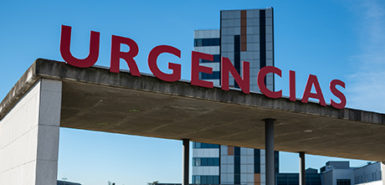
Weekday mornings are no longer the most common time for cardiac arrest, as an ever stressful world means hearts are stopping suddenly at all times of the day, new research shows.
“While there are likely several reasons to explain why more cardiac arrests happen outside of previously identified peak times, stress is likely a major factor,” said lead investigator Dr. Sumeet Chugh. He is associate director of the Smidt Heart Institute at Cedars-Sinai Medical Center in Los Angeles.
“We now live in a fast-paced, ‘always-on’ era that causes increased psycho-social stress and, possibly, an increase in the likelihood of sudden cardiac arrest,” Chugh said in a Cedars-Sinai news release.
Be ready
Andre Gauri, MD, a cardiologist and electrophysiologist who serves as section chief of electrophysiology at the Spectrum Health Fred and Lena Meijer Heart Center states, “Anyone’s at risk for (cardiac arrest),” he said. “The more people trained to recognize it and respond, the better.”
This is the action plan he recommends:
- If you see someone on the ground, check for a pulse. Shake them to see whether they respond.
- If there’s no pulse, call for help.
- Start doing CPR. The American Heart Association now recommends hands-only CPR to the beat of the disco classic “Stayin’ Alive.”
- If an AED is available, have someone grab it. “The AED is very user friendly,” Dr. Gauri said. “It talks to you.”
Response time is everything with cardiac arrest, Dr. Gauri said.
“Every minute that goes by is a 10 percent chance you’re going to die. So if five minutes goes by before someone starts applying CPR and an AED, you have a 50 percent chance of dying.”
An AED, or automated external defibrillator, is a portable, computerized device with pads that can deliver an electric shock to reset the heart so it can start beating normally again. A clearly labeled AED should be easily accessible in all public spaces where large numbers of people gather: schools, churches, airports, casinos, shopping centers and so on. If someone has a sudden cardiac arrest, an AED may be the only thing that can save them.
For the study, Chugh’s team analyzed data on cardiac arrests in Oregon between 2004 and 2014. Of the 1,535 people who died from sudden cardiac arrest, only 14 percent died between the hours of 6 a.m. and 10 a.m., and there was no evidence that more cardiac arrests occurred on Mondays.
Along with stress, other factors that may explain the findings include changes in how high-risk patients are being treated, and problems with how past studies have measured time of death caused by cardiac arrest, such as using time of death on a death certificate rather than the actual time of death due to cardiac arrest, the researchers added.
Cardiac arrest is different than a heart attack, which is typically caused by reduced blood flow to the heart due to clogged arteries. Cardiac arrest is caused by defective electrical activity of the heart. Patients may have little or no warning, and usually experience sudden death. Each year in the United States, there are about 300,000 deaths from sudden cardiac arrest.
“Because sudden cardiac arrest is usually fatal, we have to prevent it before it strikes,” Chugh said. “This is just another piece to the puzzle. Our next steps are to conclusively determine the underlying reasons behind this shift, then identify public health implications as a result.”
The study was published recently in the journal Heart Rhythm.
 /a>
/a>
 /a>
/a>
 /a>
/a>